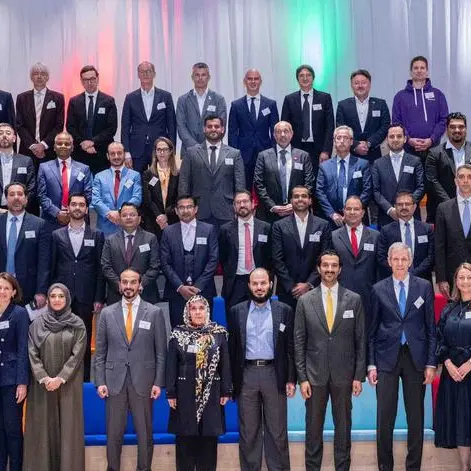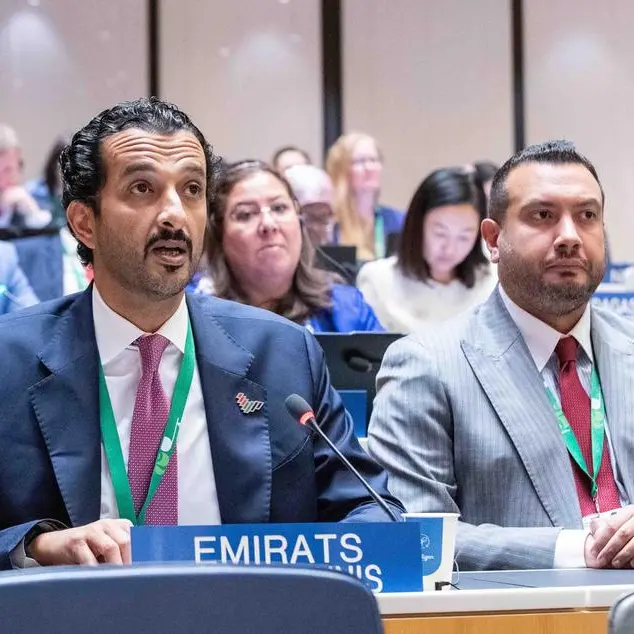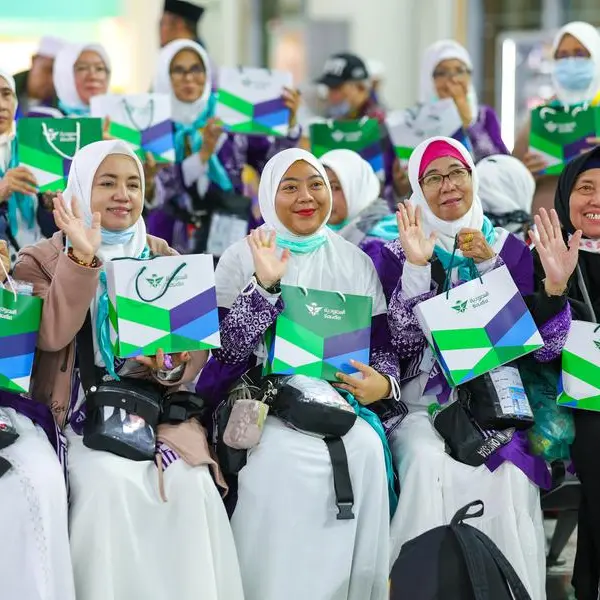PHOTO
Government of Dubai Media Office : Dubai Statistics Center (DSC) today announced the results of its Labour Force Survey 2017. The findings of the Survey reveal that Dubai had an unemployment rate of 0.5% in the last year, a figure that is significantly lower than the global average.
Arif Al Muhairi, Executive Director of Dubai Statistics Center, said: “The results of the Labour Force Survey 2017 reflect the flexibility and strength of Dubai’s economy, which has a high employment rate in various sectors. Total employment in Dubai reached 2,778,000 in 2017, out of which emirate’s resident workforce numbered 2,077,603 while its non-resident workforce (workforce residing outside Dubai) totalled over 700,000. Over the last three years, Dubai’s labour market has added an average of 110,000 people annually to its resident workforce.”
The 2017 Survey results show that the overall economic participation rate (percentage of employed people in the total working-age population) increased in 2017 by nearly one percentage point to reach 83.1% from 82.2% in 2016. Female workers accounted for the largest share of the increase in the economic participation rate, rising 4.3 per cent to reach 53.6% in 2017, compared to 49.3% in 2016.”
The economic participation rate of Emiratis increased by 3 percentage points to reach 51.1%. Emirati men had an economic participation rate of 65.4% while the corresponding figure for Emirati women was 37.4%. These high rates reflect the positive impact of government policies designed to promote gender balance and greater economic participation among Emirati men and women.
Revealing details of the unemployment rate of Emiratis residing in Dubai, Al Muhairi said: “The rate increased by half a percentage point, from 2.9% in 2016 to 3.4% in 2017. The unemployment rate of Emirati men increased by 0.6 percentage point, from 2% in 2016 to 2.6% in 2017 while that of Emirati women increased by half a percentage point from 4.4% in 2016 to 4.9% in 2017, bringing the total number of unemployed Emiratis residing in Dubai to 2,851.”
Composition of the workforce
The Survey results reveal that the composition of the Emirati workforce is markedly different from that of non- Emiratis. A quarter of employed Emiratis work as technicians and associate professionals (25.7%), while about a quarter of employed non- Emiratis are craftsmen (24.1%). More than a third of Emirati women work in specialised occupations that require high education, skill and competency while 28.7% of Emirati men work as technicians and associate professionals.
Legislators, senior officials and managers among Emiratis make up 14.3% of the total Emirati workforce. The category of leaders accounts for 15.2% of the Emirati male workforce and 12.9% of the Emirati female workforce. It was also found that 9.3% of the total workforce belong to the categories of legislators, senior officials and managers; 14.3% of employed Emiratis and 9% of employed non-Emiratis belong to these categories. Employees in the category of specialists accounted for 13.3% of the total workforce; specialists account for 23% of the Emirati workforce and 12.9% of the non-Emirati workforce. Technicians and associate professionals make up 11.3% of the total workforce; this category accounts for 25.7% of the Emirati workforce and 10.7% of the non-Emirati workforce.
Employees by economic activity
The survey also broke down the total workforce in Dubai by economic activity, Results showed that 27.6% of the labour force work in the construction sector, 17.9% in the wholesale and retail trade sector and 8% in manufacturing. As much as 54.7% Emirati employees work in public administration, defense and compulsory social security, while 28.7% of non- Emiratis work in construction.
Al Muhairi highlighted the fact that the participation of men and women show variation across different economic activities. “About 61.5% of the Emirati male workforce have jobs in public administration and defence compared to 42.6% of females. About 9% of Emiratis work in transportation and storage activities and 8.2% work in wholesale and retail activities. Women working in finance and insurance activities represent 13.8% of the total Emirati female workforce while those working in education account for 7.9%.”
Education
The Survey results also show that 63.3% of the total workforce hold a secondary education certificate or higher qualification while 34.1% hold a bachelor’s degree or higher qualification. The majority of employed Emiratis have educational qualifications; 42.2% hold a bachelor’s degree or higher qualification; 52.8% of employed Emirati women and 35.8% of employed Emirati men have a bachelor's degree or higher qualification.
Unemployment
The term ‘unemployed’ refers to an individual who is not working while he or she is capable of doing so and is actively looking for a job. The vast majority of unemployed people in Dubai – 98.8% – are in the age group of 20 to 39 years. Youth in the age group of 18-24 years represent 39% of the total number of unemployed people in the emirate.
Emiratis in the 18-24 age group account for 48% of a total of 2,851 unemployed Emiratis while non-Emirati youth in the same age group make up 35.6% of a total of 7,196 unemployed non-Emiratis.”
The majority of unemployed people residing in Dubai hold a secondary certificate or higher qualification. Out of a total of 10,047 unemployed people, 76.5% hold a bachelor’s degree or higher qualification. Unemployed female Emiratis holding a bachelor’s degree or higher qualification make up 90.1% of total unemployed female Emiratis. In contrast, 22.3% (more than one fifth) of unemployed male Emiratis hold a bachelor's degree or higher qualification.
Distribution by educational level
People with preparatory education account for 6% of unemployed people. Emiratis with preparatory education represent 4.4% of the total number of unemployed Emiratis while the corresponding figure for non-Emiratis is 6.7%
About 10% of unemployed people hold a high school certificate; 33.2% of unemployed Emiratis and 0.9% of unemployed non-Emiratis have a high school certificate. Among the unemployed, 7.5% hold pre-university diplomas; 4.1% of unemployed Emiratis and 8.8% of unemployed non- Emiratis hold a pre-university diploma. Holders of a Bachelor’s degree or higher qualification make up 76.5% of unemployed people; 58.3% of unemployed Emiratis and 83.6% of unemployed non- Emiratis hold a Bachelor’s degree.”
Al Muhairi expressed his gratitude and appreciation to all families that participated in the Labour Force Survey 2017. He said that the detailed results of the Survey can be accessed on various platforms that publish official statistical data including the DSC’s smart application, website and hotline (800-DSC-372). The public can access statistical reports and indices and obtain advisory support.
The Labour Force Survey is one of the most important annual strategic statistical projects carried out by the Dubai Statistics Center. It is an important information resource for developing labour market plans, policies and indices. The Survey, conducted according to the latest International Labour Organisation (ILO) recommendations and standards, identifies the demographic, social and economic characteristics of both the employed and the unemployed. The Survey also seeks to identify the main characteristics of individuals outside the labour force, including those involved full time in household duties, students, the elderly and the infirm.
The Labour Force Survey was based on a representative sample of 3,000 households resident in Dubai. The sample included 1,500 Emirati households and 1,500 non-Emirati households. A sample of 1,000 workers from labour camps also participated in the survey.
-Ends-
© Press Release 2018Disclaimer: The contents of this press release was provided from an external third party provider. This website is not responsible for, and does not control, such external content. This content is provided on an “as is” and “as available” basis and has not been edited in any way. Neither this website nor our affiliates guarantee the accuracy of or endorse the views or opinions expressed in this press release.
The press release is provided for informational purposes only. The content does not provide tax, legal or investment advice or opinion regarding the suitability, value or profitability of any particular security, portfolio or investment strategy. Neither this website nor our affiliates shall be liable for any errors or inaccuracies in the content, or for any actions taken by you in reliance thereon. You expressly agree that your use of the information within this article is at your sole risk.
To the fullest extent permitted by applicable law, this website, its parent company, its subsidiaries, its affiliates and the respective shareholders, directors, officers, employees, agents, advertisers, content providers and licensors will not be liable (jointly or severally) to you for any direct, indirect, consequential, special, incidental, punitive or exemplary damages, including without limitation, lost profits, lost savings and lost revenues, whether in negligence, tort, contract or any other theory of liability, even if the parties have been advised of the possibility or could have foreseen any such damages.




















